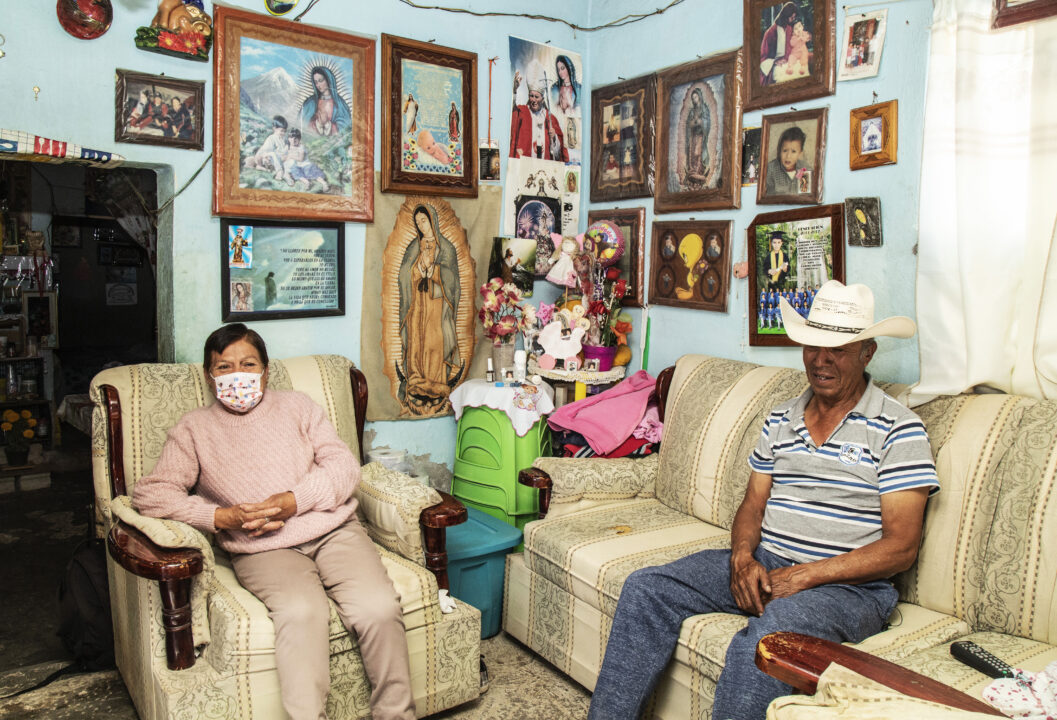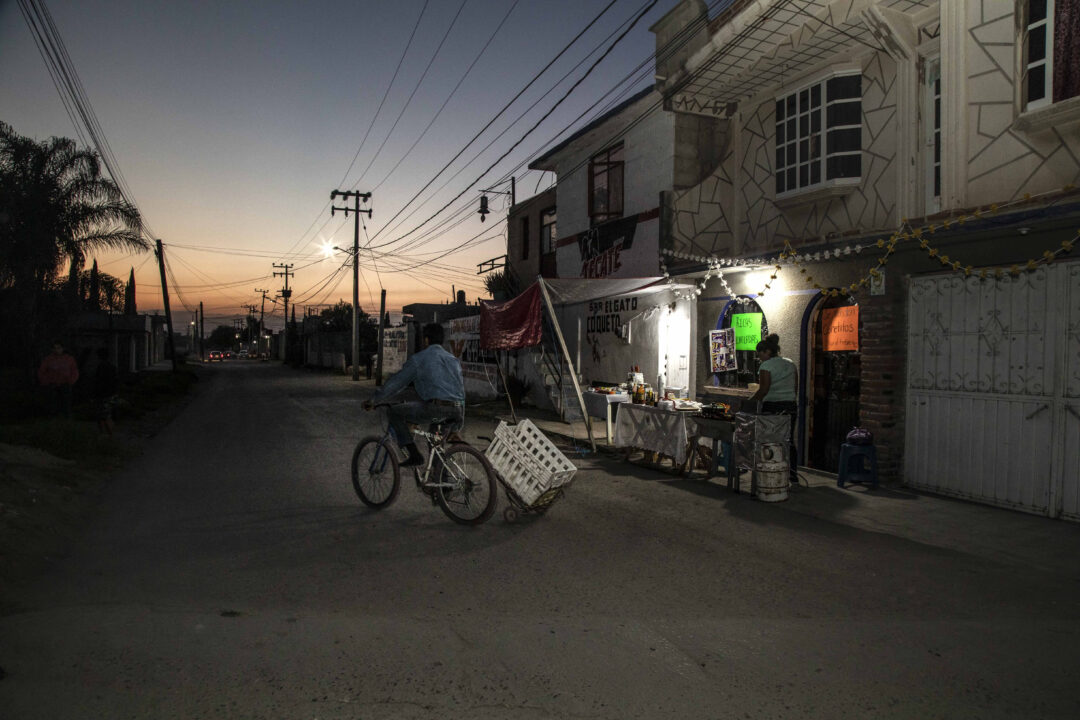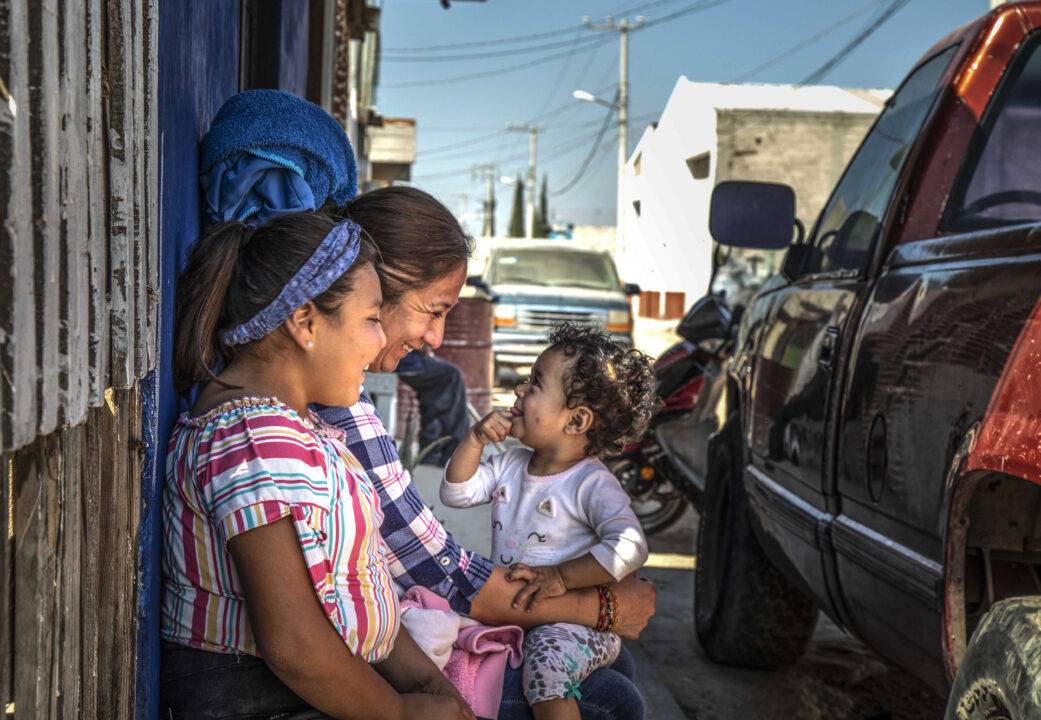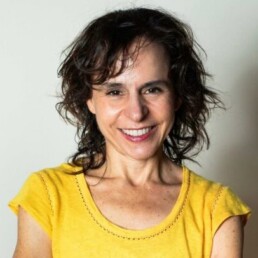When setting out to create her next feature film, director Laura Plancarte had three clear goals: to portray a strong woman breaking stereotypes about femininity, return to her roots in Mexico, and challenge clichés about the dreams and capabilities of impoverished women. It’s safe to say that her new film, Mexican Dream, does exactly that. A hybrid documentary/narrative film that tells the story of a woman who flees to Mexico to avoid abuse, regain custody of her children, as well as undergo IVF, the film speaks to the strength of women worldwide.
Related: ‘Mexican Dream’ Review: A Tale of Heartache and Second Chances
In our exclusive interview, director Laura Plancarte discusses the inspiration behind making Mexican Dream. Further, she talks about working with her main lead, the responsibility she felt portraying Latina women onscreen, and her hopes for future films: “Things that from the outside seem inexplicable, when you go deeper you find clues, sometimes answers, sometimes a certain hidden truth.”
Cinemacy: Your new film, Mexican Dream, follows a woman named Malena fleeing to Mexico after enduring an abusive relationship and custody battle for her children. I understand that the film initially started as a documentary before it turned into a hybrid doc-narrative film. What was the original idea for this project? How did you find Malena, and what about her did you connect with when deciding you wanted to tell her story?
Laura: After completing my last film, Non Western, I had three clear goals for my next project: I wanted to portray a strong woman breaking stereotypes about femininity, return to my roots in Mexico, and challenge clichés about the dreams and capabilities of impoverished women.
With the help of a friend who participated in my first film, I reached out to women in Mexico, inviting them to join me for a Zoom call to discuss the possibility of creating a documentary about their lives. The day I met Male, the protagonist of Mexican Dream, I knew it was her who I was looking for. Not only did her strength and charisma come across straight away, but her desire to have another child through IVF, despite her complex relationship with her teenage children and financial hardships, intrigued me. I realized she could challenge audiences to see a different side of a Mexican woman who comes from poverty, breaking stereotypes and shedding light on the complexities of femininity, motherhood, and Mexico’s unjust social structure.
Her strength inspired me deeply. It drove me to create a film that could inspire and support other women who have faced similar experiences.

We see that Malena endures much hardship in her life, surviving an abusive relationship with her ex-husband to whom she loses custody of her children, and undergoing IVF. What ideas, themes, and messages did you want to ensure came through in telling her story on screen?
I’ve witnessed it first-hand time and again: women are consistently at the back of the line in discussions to promote fairness. Our society remains deeply patriarchal. While progress has been made over the past 50 years, there’s still much work to be done. We’ve all internalized patriarchal norms to some extent, which is why the fight must continue. In Mexican Dream, I aimed to ensure that the audience could witness the multitude of roles and expectations placed on women. From being mothers to breadwinners, and caregivers to the glue holding families together, women are expected to excel in every aspect. Yet, if they fall short, they’re often labeled as bad mothers or selfish individuals. I wanted to make a portrait of femininity. Not only with the Male’s story, but with the stories of all the women that appear in the film.
I’m not a mother myself, and I find it incredibly unfair that society still expects mothers to be a sort of saintly figure. There’s no rulebook dictating that becoming a mother means sacrificing one’s individuality. While caring for children is crucial, we must recognize that mothers are individuals with their own needs and aspirations. By creating a society that supports rather than impedes mothers, we can strive towards a more balanced and equitable world. With Male’s story, I wanted to reach to the audience and say: ‘Yes she’s not perfect, no one is, but she’s pretty great.’ She has never settled, she fights and works relentlessly. While her relationship with her children is complicated, a society that prioritizes support over punishment could significantly improve their dynamic.
What was your approach to working with Malena as the project began? I can only imagine collaborating was tough, given she has lived a hard life.
Since the beginning, I knew I wanted to make a film in collaboration with Male. Through making observational documentaries previously, I learned that participants can be disappointed in the way they’ve been portrayed, even though I aim for honesty and sensitivity without sensationalism. We all have idealized self-images. So, I searched for a method where I could authentically tell Male’s story. Also, while giving her agency in the way she was going to be represented. I sent Male an iPhone with accessories so she could film herself and I could blend material filmed by her with material filmed by me. It was challenging because soon after I met her in late January of 2020 the pandemic hit. During our first year of collaboration, we met via Zoom for one-and-a-half-hour sessions on Mondays, Wednesdays, and Fridays.
When lockdowns eased, I traveled to her hometown to film her and her relatives and when we were apart, she filmed herself and I directed remotely. It was challenging but an incredible experience. In a way our Zoom sessions became like a recorded diary of what was happening in her life, what she felt, thought, and desired.
How did the decision to turn the documentary into a hybrid film (co-written by you and Malena) come about? What were the first steps you took to transform it into a written feature film?
After a year and a half of filming together, Male regained custody of her teenage children. While this was great news, it posed complications due to the fragile nature of their relationship and the vulnerability of her children. Therefore, our working method evolved into writing together instead of filming together. This way Male could protect her relationship with her children, and it would also give her children agency in the way they were going to be represented. It’s very different to be caught on camera than to re-enact an event or show how you feel or think about something. I’m very happy that we took this route, as it has been a great pleasure to collaborate with all the participants instead of just observing and filming them.
Whether through a pure observational documentary or a hybrid film created in collaboration, both approaches can unveil a certain truth, shaped by the director’s perspective. I believe that the way Male represents herself in front of the camera carries a greater sense of power compared to the footage captured earlier when we were both filming her story. It may seem unconventional, but the footage filmed after our writing collaboration, reveals deeper truths than our earlier material.

What obstacles did you face throughout making the project? What was the hardest, and what was the most unexpected?
The biggest challenge in the making was navigating the delicate dynamics of her relationship with her teenage children. When Male regained custody of her kids, I interviewed her son Jhovani. Even before I could ask a question, tears rolled down his cheeks, revealing his vulnerability. It became evident to me that while Male chose to work on a film with me, her son didn’t. At that point, I realized that we needed to find a different approach. It wasn’t worth taking chances and risking her children getting hurt. When I proposed to Male to shift our collaboration from filming together to writing together, Male initially felt disappointed. She enjoyed the process of filming herself with the iPhone and recording sound. However, when she realized how this would protect her children and their dynamic, she embraced the idea.
The hardest moment to film was the scene where Male’s daughter, Fátima, rejects her. It was particularly challenging, as it required them to re-enact painful past experiences. Despite the difficulty, Male shared that on the day after the shoot, she and her daughter engaged in an open conversation about unresolved issues between them. And, that she was pleased. This was rewarding to both them and me.
Is there any scene in particular that you are most proud of, or think of fondly?
It’s difficult to name one scene, so I’ll tell you my favorites: The scene where the Male and the group of women gather for a BBQ, sharing their experiences in motherhood, was a moving moment for me and it was eye-opening.
My favorite scene visually is when Male and Edgar are in their bedroom. The curtains cast a pink-red hue, enveloping the space in a warm glow, and we can witness authentic intimacy between them.
The closing scene at the bar, with Male, Carla, and Juanito singing, was loads of fun. They are some of the most vibrant and enjoyable people I’ve met. While filming their conversations I often struggled to contain my laughter. Making the film was quite a rewarding experience.
What takeaway do you hope audiences will have after watching your film?
I hope the film challenges the notion that individuals from impoverished backgrounds have limited dreams, or that aspiring to bigger dreams is foolish.
My aim for the film is to spark conversations about the societal expectations placed on mothers. I also hope to convey that there are always choices available to women. Being a mother is a significant responsibility and it’s not a path for everyone. Women should have the freedom to choose whether to have children or not, without feeling pressured by societal norms.

Let’s get to know you both better. Where are you from, where do you reside?
I’m originally from Mexico but have been living in London since 2009, something I didn’t expect or planned. In Mexico, I worked as a visual and performance artist. In 2008, I started seeking opportunities to grow in my career. It was a surprise when I received a grant to study for a Diploma in filmmaking in London. However, because I made video art, it made sense. I fell in love with both filmmaking and London, nowadays, film has become my primary medium of expression.
What are your favorite films, who are your filmmaking idols, and dream collaborators?
Since working as an artist, films have always been my creative references. I’ve had many love affairs with films and filmmakers. When I was 20, Pedro Almodóvar enamored me. Particularly, his film ‘Tie Me Up! Tie Me Down!’ As I entered my 30s, it was David Lynch and ‘Lost Highway’ that captivated me. I admire the works of Chloe Zhao and Hirokazu Kore-eda. Recently, I found myself obsessed with the French film ‘Full Time.’ Each phase of life brings new cinematic loves and inspirations.
What is one thing you’ve learned as a filmmaker that you think other filmmakers would benefit from knowing in starting their careers?
Don’t believe that one mistake will ruin your chances. If you work hard and you push a door will open bringing a new opportunity. Don’t give up when things get tough; the industry is full of ups and downs. Enjoy the journey because awards and recognition are temporary.

What is the future of this film? Do you have any future creative projects?
Mexican Dream just got Distribution in Spain through DocsBarcelopna’s distribution company Planeta. They promised at least 60 cinemas, plus TV and VOD and I’m very happy about this. Now at HOT DOCS where the film is having its international premiere, I have meetings with Canadian and American distributors, and with broadcasters and VODs. Fingers crossed; I think more good news will arrive soon. It’s a film that touches on very universal topics.
I’m currently working on a film about an interracial French boxing couple living in London. George and Sonia are both passionate Muay Thai fighters and the proud parents of a beautiful two-year-old boy. They are incredibly charismatic. And they are set to challenge the audience’s preconceptions about fighters, gender roles, and the motivations behind their choice to risk it all in the ring. They are both successful, own their own boxing gym, share a deep love, and are great parents. So, why risk it all? With this film I want to delve into our societal obsession with achievement and our addictions, exploring the psychological journey behind our relentless need to prove ourselves, whether as exceptional athletes, filmmakers, scientists, or in other pursuits.
What is one message that you would like to share with audiences about your work, your general outlook on life, that you are interested in further showcasing in your films?
My passion has always revolved around working with real people. I believe there is nothing more potent than reality itself. And I love meeting people and learning about worlds different to mine. In a way, it’s like reading a book where you get to meet the characters. I think it’s a real treat. Since working as an artist, I’ve been trying to find answers to existential questions, and I’m fascinated by human behavior. I’m interested in exploring why we choose the things we do. Things that from the outside seem inexplicable, when you go deeper you find clues. Sometimes answers, sometimes a certain hidden truth.
I feel very blessed to get the opportunity to do what I love and to be able to share it. I want to open conversations and portray that things and people are complex. That there is no easy solution. Things aren’t black or white. I’m very grateful as I have had great adventures in all my films. And I have fallen in love with all my characters. I think it wouldn’t be possible for me to do it otherwise, as I spent at least three years with them, watching them every day either in person or in filmed material. And receiving emails from audience members sharing how my films have impacted them is a full-circle moment for me.
To learn more about Laura Plancarte, visit https://www.lauraplancarte.com/

